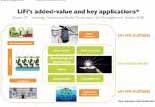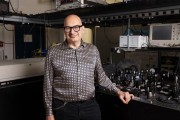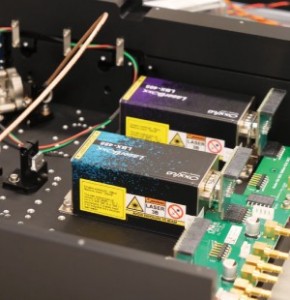
LiFi represents a strong potential technology, announces Yole Développement (Yole) and PISEO. However, both partners do see two major challenges that could prevent the technology from developing at a fast pace in the short/mid-term: standardization activities, and development of products and services integrating LiFi. In this context, two market development scenarios are envisioned by Yole and PISEO analysts: a “Bear” scenario - LiFi as a complementary communication technology for niche applications. And a “Bull” scenario- LiFi, the favored communication technology for strong use-cases.
The new LiFi report performed by Yole and PISEO, titled LiFi – Technology, Industry and Market trends, offers a comprehensive description of the LiFi industry and market, including supply/value chain, company profiles of key LiFi technology providers, product segmentation, and a detailed section focused on the market volume & revenue forecasts. It also presents an in-depth analysis of LiFi systems, including light emitter and receiver, electronic data management, and digital modulation aspects. In addition, analysts point out in this new analysis, the global standard and regulation aspects related to LiFi development.
Currently, the LiFi industry is still in its infancy. “Our best expectation is for significant growth to begin in 2021, with a 53% CAGR between 2021 and 2023”, asserts Pars Mukish, Business Manager, SSL & Displays at Yole. “Industrial, hospitality & healthcare, retail, office, education, and residential will represent 80% of the expected volume in 2023.”
Technology integration and volume will then allow strong cost/price reduction, which will fuel market growth that could reach US$2.7 billion in 2028.
Introduced by Harald Haas in 2011, LiFi is an OWC technology. LiFi uses the electromagnetic spectrum’s visible-light portion to transmit information at very high speeds. LiFi is strongly valued nowadays, thanks to the development of LEDs , which represent high-frequency semiconductor light sources capable of transmitting information. To perform such communication, LEDs are modulated at a high frequency level that can’t be perceived by the human eye.
With the recent boom in SSL, LEDs are now commonly used in lamps, luminaire, and many other lighting devices considered as potential data providers for LiFi systems.
Compared to other OWC technologies, LiFi offers advantages such as:
• Speed: High transfer data rates have been achieved in multiple demonstrations, with LiFi sometimes presented as 10 - 100x faster than Wi-Fi.
• Security: Visible light-beam and intensities are easily controlled with existing technologies.
• Energy efficient: The transmitted energy for communication is carried by visible light, which is intrinsically used for lighting applications.
• Etc… See the figure: “LiFi’s added-value & key applications.”
“Many applications can benefit from LiFi technologies: avionics, underwater data communication, healthcare, automotive & transportation, education, and more,” comments Joel Thomé, General Manager at PISEO.
By nature, LiFi helps solve specific issues in numerous applications: for example, reducing a plane’s weight by using optical fiber instead of copper cables, or eliminating the risk of electromagnetic interference in hospitals. On a broader scale, LiFi can also provide additional bandwidth capacity to communication networks (when available).
A detailed description of this report is available on i-micronews.com, SSL reports section.




































 Back to News
Back to News



























